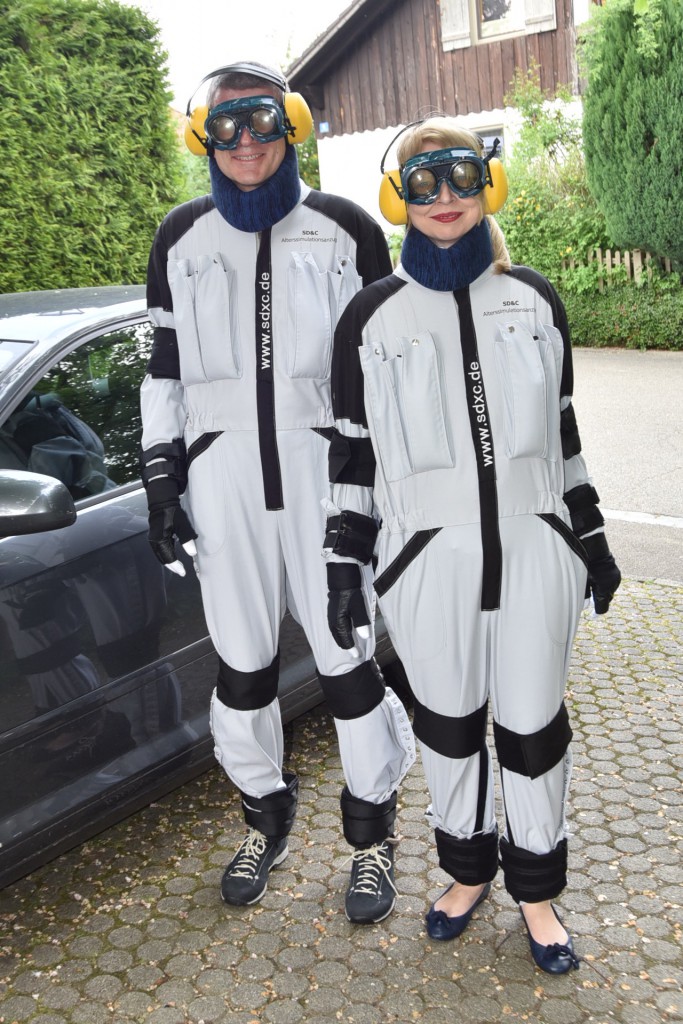Prof. Dr. Simone Besemer and Prof. Dr. Simon Ottler from the Duale Hochschule Baden-Württemberg in Ravensburg visited SD&C in the north of Munich to inspect and evaluate the Senior Suit Delta.

Despite their difference in their size, the age simulation suit fitted both professors, and a weight adjustment on one suit was quickly done. The tinnitus simulation impressed them, because the knew well that many people suffer from it. There were glad to be able to switch these sounds off again. The cervical collar significantly limited the mobility of their heads, and with regard to the elbow joints, a light wrapping of the bandages was sufficient, and both were almost not able to reach up to their own hairs. The simple variants of gloves produced a realistic and not exaggerated reduction of the sense of touch. As usual, visual performance was compared using font sizes on an opticians sheet. Without the simulation, the smallest font (1) could be read by both professors, with the optic’s visor folded down, both needed size (5) to (7). By carrying an empty crate of bottles over stairs, the visitors were able to experience themselves the effects of the reduced strength, and when throwing darts, to experience the effects of age simulation on coordination. Counting money in the simulation suit was of the practical importance, and when sitting in a vehicle, several restrictions were quickly noticed, such as a difficulty to reach for the seat belt.
The interesting question of the minimum size of a sample for market analyses was discussed. ISO 20282 requires a minimum size of 20 persons for usability tests, but recommends 50 or more. This also corresponds to the SD&C-known general industrial standard of meaningful tests in product development, although purely explorative studies sometimes want to get by with only three test subjects. For age simulation a study exists, in which 20 younger test persons in suits were compared with 20 real older test persons in numerous operations, and the results were consistent. An age simulation suit is thus a valid research instrument for demographic change. With the age simulation suit, the university ordered, students at universities will be able to investigate how Germany and Europe can be prepared for the rapidly approaching time when every second person in the country will be over 50 years old.
